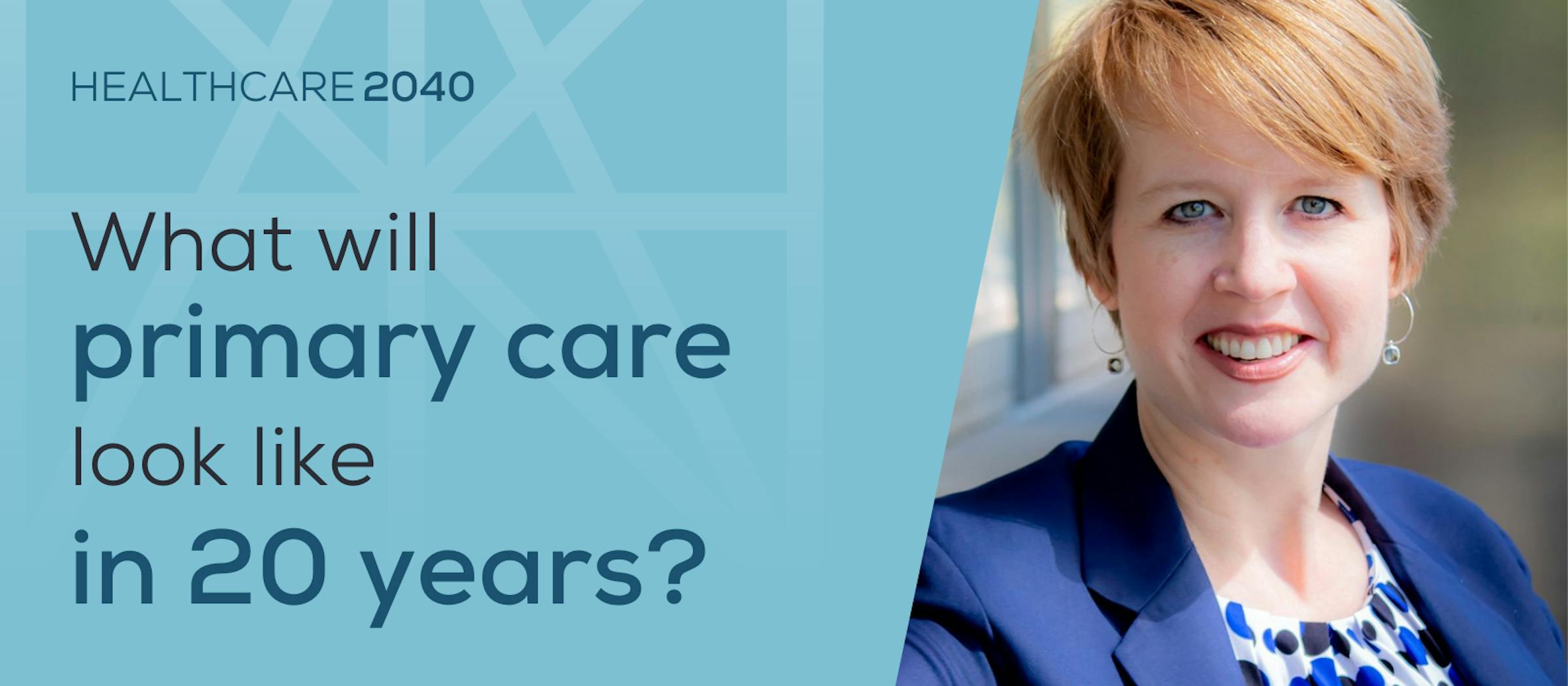What will primary care look like in 2040? 7 predictions from Dr. Lauren Hughes
Last month, we kicked-off MATTER’s Healthcare 2040 program series with health policy leader and physician executive Dr. Lauren Hughes.
We know that the future is bringing new technologies and innovations that will transform how people interact with their doctors and healthcare providers. The presence of a global pandemic has only accelerated that change: It has created different challenges and solutions, and we’ve seen new technology being adopted at a rate faster than ever before. MATTER’s Healthcare 2040 series is designed to highlight that innovation by bringing in experts from specialties across the system to share how they believe it will look in 20 years.
At our inaugural event, Dr. Lauren Hughes kicked-off our series with a discussion around the very foundation of a strong healthcare system: primary care. According to Dr. Hughes, when good primary care is available, it leads to higher quality and lower cost of overall care and is one of the most impactful areas for equitable distribution of health among the population. She shared how she believes primary care is already changing — both due to the pandemic and new technologies — and how she hopes to see it change in the future. Following are seven of the changes she sees coming to primary care in the next 20 years:
Responses have been edited slightly for length and clarity.
1. Primary care will be seen as a public good
“Primary care will increasingly be recognized as a public good, not necessarily in the pure economic definition of what a public good is, but in the way that primary care is recognized as a critical need that every person in this country has — one that we must expand access to.
“I’m also making an assumption that in a post COVID-19 world, primary care will be supported in its ability to fulfill the social contract. And what I mean by ‘social contract’ is an obligation to put patients, family and community needs ahead of our own in exchange for physicians, nurses and other professionals to be self-regulated.”
2. There will be a shift in focus from clinic to community
“It’s time to step outside of the confines of a solitary office clinic visit and into the realm of the community, and to prioritize the needs, priorities and values of the community that you are serving as part of a primary care team. In essence, we are moving from ‘you come to us’ mantra to ‘we’re going to go to you.’ Moving from retrospective mindset to a prospective mindset. And moving from a reactive stance to a proactive stance.”
“We are moving from ‘you come to us’ mantra to ‘we’re going to go to you.’ Moving from retrospective mindset to a prospective mindset. And moving from a reactive stance to a proactive stance.”
3. What makes up a primary care team will expand
“We need to go into the community itself — starting much earlier in the pipeline than just thinking about how we get high schoolers interested in healthcare careers or get college students into medical school.
“If you pull in members of the primary care team from the community, they’re more likely to understand the needs, priorities and values of that community, and that helps fine tune the efficacy of the primary care services that are delivered. I would love to see patients have a full understanding of their primary care team.”
4. A ‘primary care day’ will look completely different
“Hopefully by 2040 we will identify ways — with new payment or investment structures — to completely overhaul and reschedule a primary care day to allow patients to schedule time with the primary care team more often and provide them appointments that are of adequate lengths for the concerns that they are bringing in.
“I will be so excited to see what a future primary care day looks like from a scheduling perspective. There is much need for innovation in this space. What is the right combination of low tech (like a phone call), high tech (like video technologies) and in-person or home visits? What’s going to be the right combination of ways to access and connect with your primary care team based on the community’s needs? Wearables and remote patient monitoring devices are here to stay, but right now they’re not integrated with EMRs in a way that allows us to efficiently access or use or apply that data in any way.”
5. Healthcare professionals will shift their training model
“In 2040 I would love to see us get to a place where we can advance truly interprofessional care and ‘whole health’ training. It will be important in future training models for primary care doctors to learn to care for patients alongside other professions in that community-based primary care team, while still paying attention to the importance of achieving clinical excellence…We’ll need to figure out, and embed this in training, how to develop sense making approaches to navigating, interpreting and applying information that we’re receiving from multiple sources, whether it’s from the community or from patient wearables.”
6. A focus on innovation will become the norm among primary care teams
“I’d love to see us be able to promote rapid cycle learning and innovation in primary care, eventually making that the expectation and reality of the future of primary care.
“I can see this happening in a variety of different ways. The first is to launch a nationwide primary care extension program modeled after the very successful agricultural cooperative extension program that has revolutionized farming practices over the past a hundred years. What can we learn from that approach to help provide training, technical assistance and resources to primary care so it can innovate to better meet the needs of our local communities?
“I could also see us creating regional primary care incubators that fully understand and appreciate primary care complexity and all that goes into the functions that we provide. We could have a dedicated local community or primary care staff as part of the primary care team, with one or two staff members solely focused on innovation and learning, that regularly look out to other primary care teams and connect to regional incubators.”
7. Primary care will always remain focused on human connection (regardless of technological advancements)
“I have one note of caution: There is this excitement that technology could wholesale or take over primary care and many other healthcare services and specialties. I would caution us against that. Technology is a very important adjunct and tool to help us be better, smarter, more effective and more connected in primary care. But it’s really important to maintain the focus on human connection and presence, and we need to continuously think about how to do that in light of these new technologies and solutions that will become increasingly online.”
“Technology is a very important adjunct and tool to help us be better, smarter, more effective and more connected in primary care. But it’s really important to maintain the focus on human connection and presence…”
Want to learn how the MATTER community is helping create the healthcare system of the future? Read how our partners Anthem and Health Care Service Corporation are prioritizing innovation to prepare for the post COVID-19 world, or learn how one of our startup members is using AI to solve the challenges created by the pandemic.



